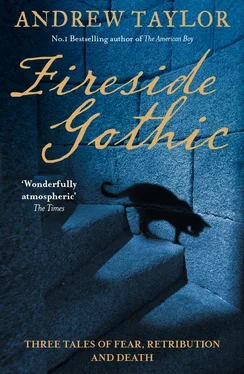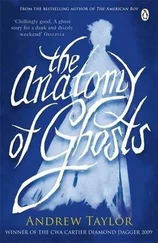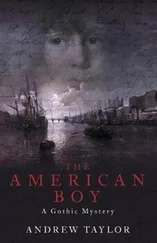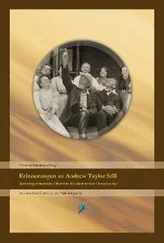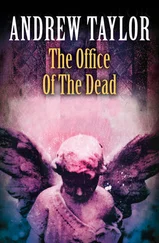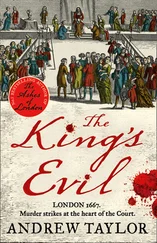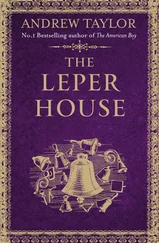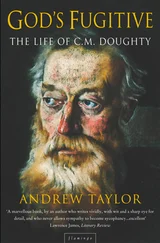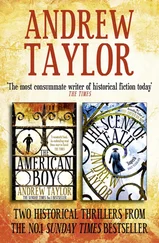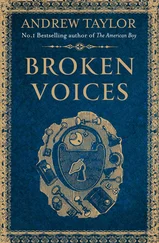ANDREW TAYLOR
Fireside Gothic

Published by HarperCollins Publishers
1 London Bridge Street
London SE1 9GF
www.harpercollins.co.uk
First published in Great Britain by HarperCollins Publishers 2016
Copyright © Andrew Taylor 2016
Cover design by Dominic Forbes © HarperCollins Publishers Ltd 2017
Cover photographs © Alamy: front cover Aurora Photos(cat), Sergio Azenha (steps)
Andrew Taylor asserts the moral right to be identified as the author of this work.
A catalogue record for this book is available from the British Library.
This novel is entirely a work of fiction. The names, characters and incidents portrayed in it, while at times based on historical fact, are the work of the author’s imagination.
All rights reserved under International and Pan-American Copyright Conventions. By payment of the required fees, you have been granted the non-exclusive, non-transferable right to access and read the text of this e-book on-screen. No part of this text may be reproduced, transmitted, down-loaded, decompiled, reverse engineered, or stored in or introduced into any information storage and retrieval system, in any form or by any means, whether electronic or mechanical, now known or hereinafter invented, without the express written permission of HarperCollins e-books
Source ISBN: 9780008171230
Ebook Edition © NOVEMBER 2016 ISBN: 9780008179731
Version: 2017-09-01
For AKR, without whom …
Table of Contents
Cover
Title Page
Copyright
Dedication
Author’s Note
Broken Voices
Chapter 1
Chapter 2
Chapter 3
Chapter 4
Chapter 5
Chapter 6
Chapter 7
Chapter 8
Chapter 9
Chapter 10
Chapter 11
Chapter 12
Chapter 13
Chapter 14
The Leper House
Chapter 1
Chapter 2
Chapter 3
Chapter 4
Chapter 5
Chapter 6
Chapter 7
Chapter 8
Chapter 9
Chapter 10
Chapter 11
Chapter 12
The Scratch
Chapter 1
Chapter 2
Chapter 3
Chapter 4
Chapter 5
Chapter 6
Chapter 7
Chapter 8
Chapter 9
Chapter 10
Chapter 11
Chapter 12
Chapter 13
Keep Reading …
About the Author
By the Same Author
About the Publisher
This is the first time these three stories have appeared in print, and the first time they have been collected together. They were originally commissioned separately as Kindle Single ebooks and written over several years.
With the benefit of hindsight, however, it’s obvious that the stories share common themes. Perhaps fate intended them to bring them together all along.
BROKEN VOICES
Was there a ghost? Was there, in a manner of speaking, a murder?
Ask me these questions and I cannot answer a simple yes or no. I did not know at the time and now, more than forty years later, I am even less able to answer them. Perhaps an easier question is this: what exactly do I remember about Faraday and me in the few days we were together? Those years before the war seem so remote now. The First World War, that is, the one that was meant to end them all.
He and I didn’t know each other long, not properly – four or five days, perhaps. And nights, of course. I suppose there must be records – a report in the local newspaper, surely, and a police file. Perhaps letters from Faraday’s guardian. There must also have been correspondence between the school and my parents, but I found no trace of it after my mother died. We never spoke of it when she was alive, not directly, and my father wasn’t able to speak about anything after they brought him back from France in 1915.
So – all I can really rely on is my memory. But memory may, paradoxically, make matters worse. It is not a passive record of what happens, though it may misleadingly give that impression. It plays an active role too, selecting and shaping the past. Memory speculates about itself; it ruminates and dreams, edits and deletes: over time, the fruits of these processes become the memories themselves and the entire process begins again.
So what does that make Faraday’s fugitive notes? Or the man I saw in the arcade? Or even Mordred?
To take a minor example. I must have seen the view from the train as we went back to school over and over again. But in memory it is always winter, though I must often have seen it at other times of the year. All the different journeys have elided into one which, strictly speaking, never really happened at all.
The train comes north across the Fens. It’s afternoon but the light is already fading rapidly from the endless bowl of the sky. The land is nearly as featureless – a plain of black mud stretching as far as the eyes can see. I stare out of the window, trying to find something to look at – a windmill, a hedge, a tree, a farm. Sometimes there is even a Fenlander. We used to call them Boggos.
I do not want to be on this train. Nor do I want to arrive at school. But there is no help in it: that’s what I remember most of all, that the desolation outside the window mirrored the desolation within me.
That was nonsense, of course. They call it the Pathetic Fallacy, the belief that one can attach human emotions and thoughts to inanimate objects, even landscapes. I know that because Mr Ratcliffe explained it to Faraday and me. It may be a fallacy but sometimes fallacies have their own sort of truth.
When I look out of the window into the darkening world, I am looking for the two towers and dreading to find them. The sight of them means that the journey is coming to its end. One tower is taller than the other, and they are joined by the long, high-backed ridge of the nave.
The Fens diminish everything – people, buildings, trees. Everything except the Cathedral, which deals with the Fens on its own terms.
Most old English cathedrals have a school attached to them, often a King’s School set up by Henry VIII at the Reformation. Ours was of no great size – perhaps a hundred pupils, some dayboys and some boarders, aged between nine and nineteen. Within the school was another school – technically, I believe a separate foundation: this was the Choir School, whose purpose was to educate the boys who sang in the Cathedral choir.
The Choir School was very small – twelve or fifteen boys. It was ruled by the Master of Music, Dr Atkinson, who was also the Cathedral organist. For much of the time, the Choir School boys mingled with the rest of us – they attended the same lessons and played the same games. But they were a race apart, nonetheless. They were liable to vanish unexpectedly to attend practice or perform their duties at one service or another. Their choir duties took precedence over everything else, even examinations. They had privileges and responsibilities that set them apart. They rarely talked of these except among themselves, and then in terms that were largely incomprehensible to outsiders, which added to the air of mystery that attached to them.
Faraday was a choirboy. He was thirteen years old. Before all this happened, I knew very little more about him, though we had attended the same school for years. I knew that he was supposed to be good at rugger. I knew he was the head of the Choir School, which meant that at services he wore a medallion engraved with the Cathedral’s badge over his surplice, hanging from a ribbon around his neck. But I was more than a year older. He was in the form below mine and he lived in a different house. Our lives did not overlap.
Читать дальше
